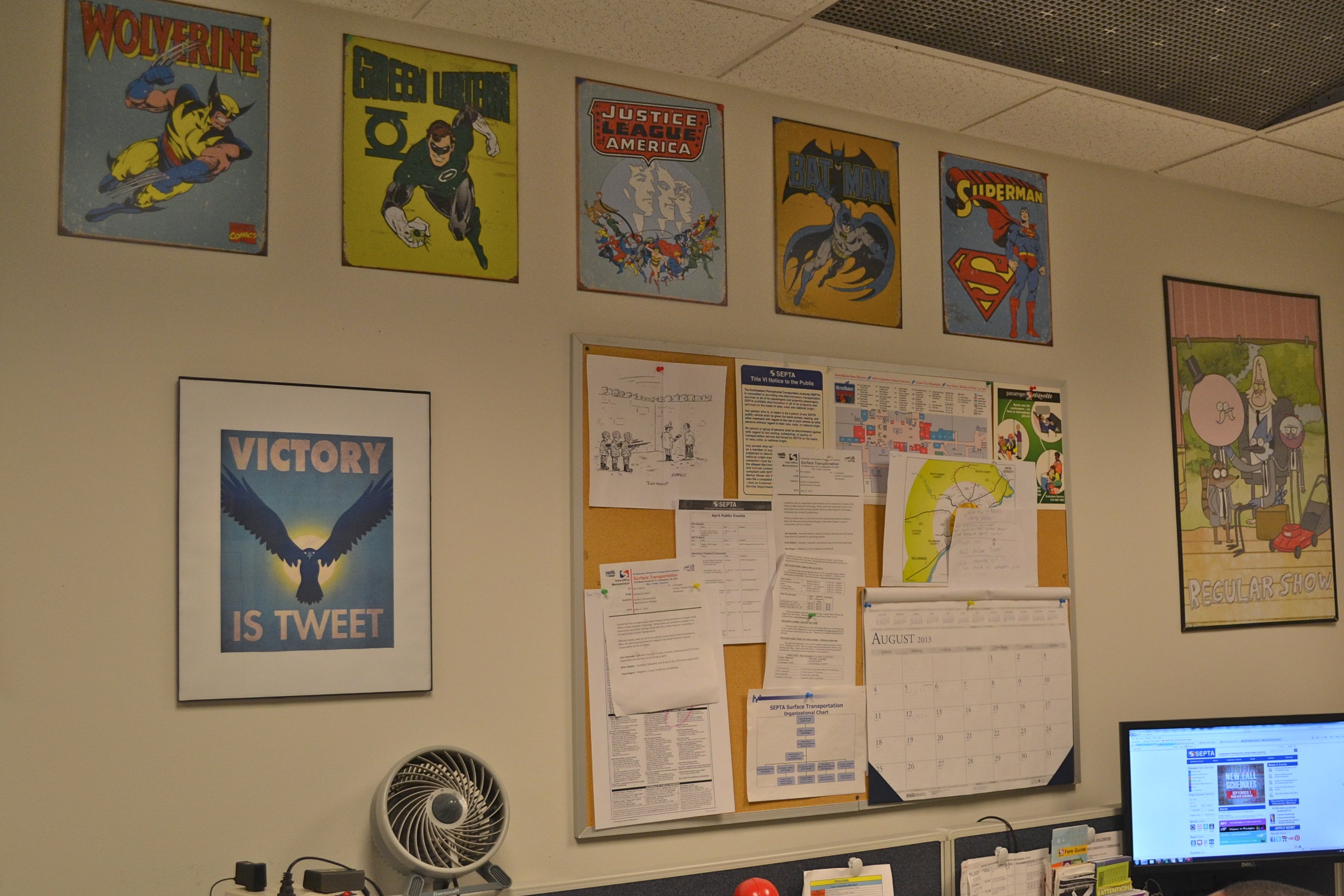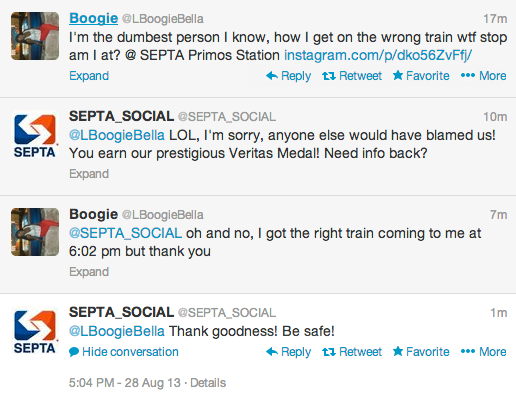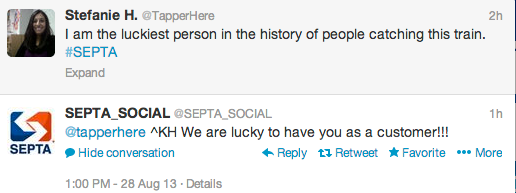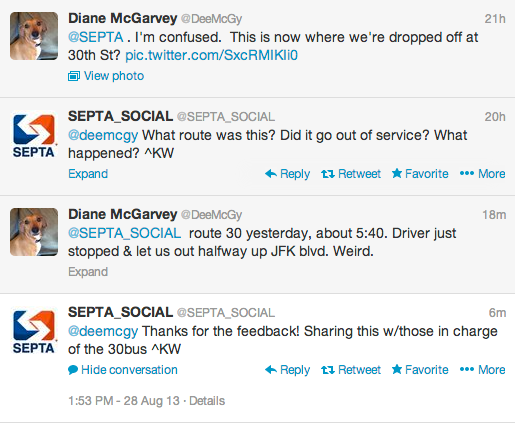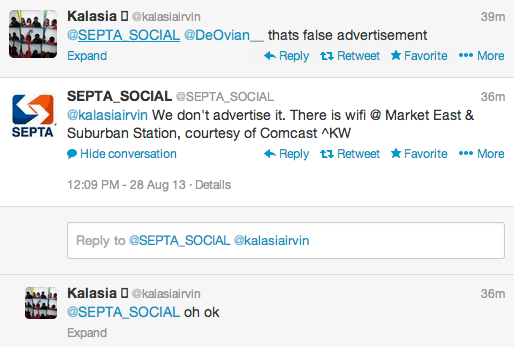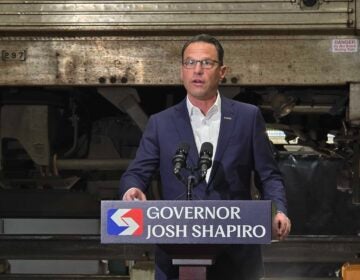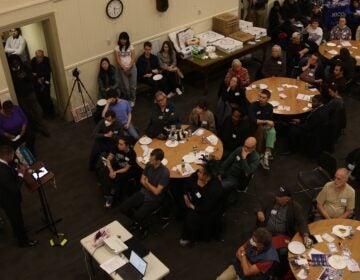SEPTA finds a consumer sweet spot in tweets

One poster hanging in a tiny three-person office in the labyrinth of offices that is SEPTA’s Center City headquarters says it all: Victory is Tweet.
Since January, SEPTA’s social media presence has taken off, thanks to the @SEPTA_Social Twitter account, a customer service channel intended to actually talk with, well tweet with, SEPTA customers.
Not sure how to get from Temple University to Wilmington, Del. by way of Regional Rail? @SEPTA_Social will instruct you via Twitter. Spot a busted bus shelter? That’s not technically SEPTA’s responsibility, but if you tweet a picture of it to @SEPTA_Social, SEPTA will make sure the advertising company responsible takes care of it and will let you know it is being worked on.
“In terms of conversational use of social, there’s no one who comes close to how we engage with our customers on a daily basis,” said Kim Heinle, assistant general manager for customer service.
SEPTA has an @SEPTA Twitter account for alerts regarding the whole system. Then there is the Twitter account for SEPTA buses, one for each regional rail line, an account for the Broad Street Line and one for the Market Frankford Line, a Twitter account for each trolley line and one for the Norristown High Speed Line. Each of these shoots out updates about the given line.
The one that is turning heads, though, is the @SEPTA_Social account. Run by the customer service team, @SEPTA_Social is all about engaging with customers, having actual conversations, and at times, even being a little sarcastic.
SEPTA started poking around at Twitter in 2008 but “didn’t do it with much fanfare because we weren’t really sure if we should even be doing it,” Heinle said.
The push was Joseph Casey, who became general manager in 2008, and made customer service his top priority. Twitter was looked at as a way to provide customer service information in the way today’s customers want to receive information.
When SEPTA first started analyzing Twitter, Heinle said, “No matter where you went you ran into a reason not to do it, a reason not to do it, a reason not to do it. We finally said, ‘You know what? It’s going to happen whether we wanna do it or not, so we might as well jump in and figure it out.'”
In January, SEPTA took the leap. They pulled three full-time employees and two part-time employees from the customer service call center and assigned them to Twitter. Now, Monday through Friday from 7 a.m. to 7 p.m. and Saturday and Sunday from 8 a.m. to 6 p.m., these customer service reps watch what’s happening on Twitter. They respond to inquiries, complaints and praise directed to the @SEPTA_Social account and watch what people are saying about SEPTA.
The idea is that this team of five people will be able to answer questions that might have come in on the phone.
“When you think about a traditional call center, that’s me talking to you,” Heinle said. “That works, but social is me talking to you and maybe 500 other people, so the impact or the potential impact, both good and bad, is significantly more.”
The Twitter team also watches for problems as they develop so SEPTA can deal with them before things escalate.
“We are trying to position ourselves to be SEPTA’s radar system,” Heinle said. “Always spinning, always listening. Saying this hasn’t become a problem yet, but we’re starting to sense there’s missiles coming in, and if we don’t intercept them or at least react to them they could be a problem.”
In some cases, the team will respond to tweets that are about, but not directed at, SEPTA.
“A lot of people don’t know we exist, so when we first contact them, they’re really surprised by it,” said Ken Williams, one of the three full-time employees running the @SEPTA_Social account.
“We really be tweeting septa,” Twitter user @DeOvian__ tweeted after a Twitter conversation with Williams about why passengers cannot access wifi in all stations.
Anyone who has seen tweets by @SEPTA_Social might recognize Williams as KW. Each member of the @SEPTA_Social team signs the tweets he sends. This is so SEPTA can track conversations internally, but it also makes the interactions seem a little more personal.
Since January, the @SEPTA_Social account has gained 2,556 followers. In the two month period from June 1 through July, the number of followers increased by 34 percent.
The personal tone of @SEPTA_Social might contribute to its popularity. That is the intent, said Vincent Puppio, one of SEPTA’s customer service program managers. To provide information and customer service, but at all costs, keep it light. He said the @SEPTA_Social team tries to be funny, even sarcastic sometimes.
James Siler, behind the Twitter signature JS, has demonstrated this when dealing with teens who tweet about skipping the fare lines. In those cases, he tends to say something like, ‘Smile for the cameras’ or ‘It’s only a matter of time before you pay the $150 fare evasion fine.’
This works, Puppio said, because the employees really have the freedom to say what they want, without approval from higher-ups. At first the Twitter staffers were hesitant, so Heinle took the lead, responding to a lot of the initial tweets sent to @SEPTA_Social.
“When they saw some of the ridiculous stuff I was doing, they said, “Ah, well I can do that, too,” Heinle said.
Of course, tweets directed at SEPTA are not always pleasant.
“We call them haters,” Heinle said. “Hatin’ on SEPTA is like part of the culture in some areas, so you read it, you follow it and you have a sixth sense whether you need to intervene.”
“You develop a thick skin after a while,” Williams said.
SEPTA has no issue talking with the “haters.” Sometimes the @SEPTA_Social team will tweet a quick quip, but most of the time they try to help people and provide as much information as they have at the time.
“That’s part of the fun of it,” Heinle said. “When people throw out a rant, a negative rant, most of the time they don’t even think we’re paying attention … When we do respond they [say], ‘Woah, they heard that.’ And we usually like to take that conversation and turn it 180. When that happens we feel we have a little success story.”
This may be one of the most surprising things about SEPTA’s Twitter presence – just how much information SEPTA shares. The transparency stems from the customer service first approach.
“Twenty-first century information has really become a core part of our business,” Heinle said. “In a way prior to that it was always looked at as more an amenity… Now information is just as vital, just as important as putting the bus on the street or putting the train on the rail.”
It wasn’t always like this, said SEPTA’s Director of Media Relations Jerri Williams. Before Casey took over as general manager, SEPTA’s leadership had what she called a bunker mentality. That has changed.
“The perception is that when you come into a government agency they’re trying to hide information or something,” said Manuel McDonnell Smith, SEPTA’s new public information manager. “The message I’ve gotten consistently from Jerri and Kim is that if we know something, we tell people about it. It’s not like we’ve got a repository of secrets.”
According to Heinle, SEPTA stands out when it comes to sharing this much information via Twitter and really engaging customers.
“I follow about eight other transit agencies and their customers to see what they do,” he said. “None of them do what we do.”
When you look at other transit agencies, a lot of their conversations are just apologies, Smith said. The @SEPTA_Social team does their best to solve issues right there on Twitter. It’s not a phone call down the line.
“Twenty-first century customer service is proactive,” Heinle said. “It’s not reactive. It’s not simply people being here to take calls and apologize and say here’s what happened last week.”
WHYY is your source for fact-based, in-depth journalism and information. As a nonprofit organization, we rely on financial support from readers like you. Please give today.



